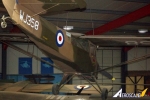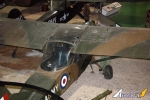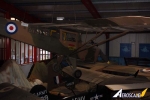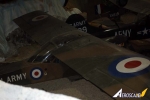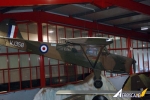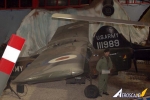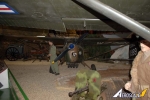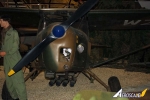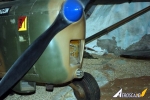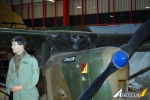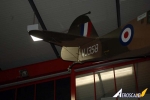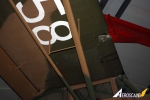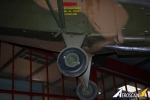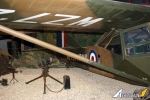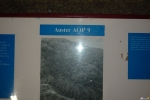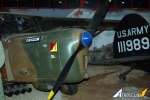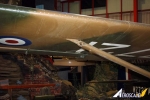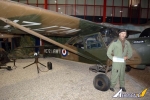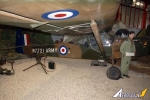Auster AOP
...
Post a Comment
history
The Auster AOP.9 was designed as a successor to the Auster AOP.6. Like its predecessor, it was a braced high-wing single engined monoplane with a fixed tailwheel undercarriage. Although having the same general appearance, the AOP.9 was a new design, with larger wing area and a more powerful engine. The wing and tail were metal-skinned, but the fuselage and ailerons were fabric-covered. The fin and rudder assembly were more angular in the new aircraft with a noticeable dorsal fillet. A combination of the more powerful 180 hp (134 kW) Blackburn Cirrus Bombardier engine, larger wings and large flaps gave it an improved take-off and landing performance compared with the AOP.6. It could operate from ploughed fields and muddy surfaces using low pressure tyres and strengthened undercarriage.The cabin held three seats, pilot and passenger side-by-side and the observer behind, facing either forwards or rearwards. The aircraft was also designed to be convertible into a two-seat light transport with an interchangeable rear floor. In this configuration the observer sat alongside the pilot.
The prototype WZ662 first flew 19 March 1954. Auster Aircraft allotted its model designation B5 to the AOP.9 design.
History adapted from Wikipedia.
wz721 and wj358
The Museum's two Austers represent the penultimate and ultimate developments of C.G. Taylor's light aircraft design.Copyright ©2021 by Darren Baker. Images also by copyright holder unless otherwise noted. The views and opinions expressed herein are solely the views and opinions of the authors and/or contributors to this Web site and do not necessarily represent the views and/or opinions of AeroScale, KitMaker Network, or Silver Star Enterrpises. Images also by copyright holder unless otherwise noted. Opinions expressed are those of the author(s) and not necessarily those of AeroScale. All rights reserved. Originally published on: 2015-01-30 20:49:36. Unique Reads: 10416





